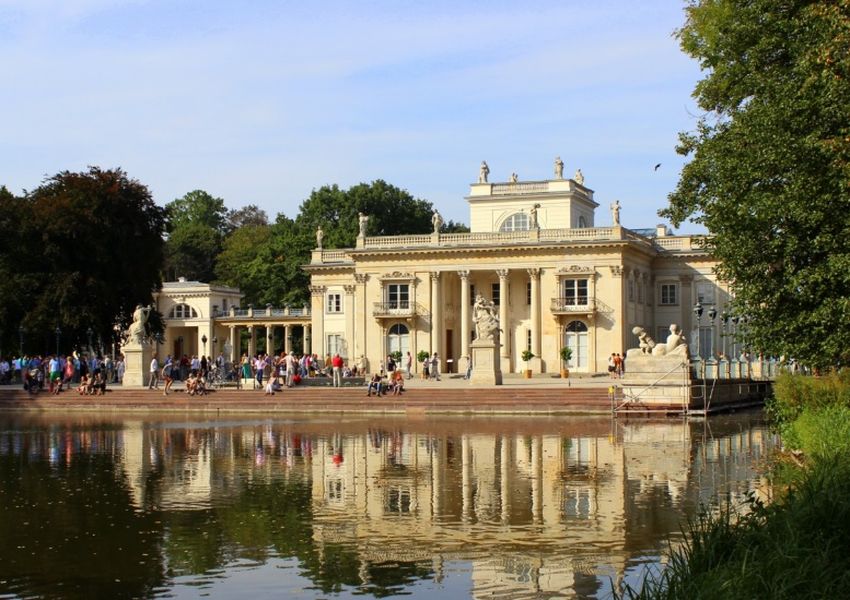Warsaw / Warszawa
Warsaw / Warszawa
although today's Warsaw is a fairly young city, it has many tourist attractions. Apart from the Warsaw Old Town quarter, reconstructed after World War II, each borough has something to offer.

Among the most notable landmarks of the Old Town are the Royal Castle, King Zygmunt's Column, Market Square, and the Barbican.
Further south is the so-called Royal Route, with many classicist palaces, the Presidential Palace and the University of Warsaw campus. Wilanów Palace, the former royal residence of King John III Sobieski, is notable for its baroque architecture and parks.
Warsaw's oldest public park, the Saxon Garden, is located within 10 minutes' walk from the old town. Warsaw's biggest public park is the Royal Baths Park, established in the 17th century and given its current classical shape in late 18th century. It is located further south, on the Royal Route, about 3 km (1.9 mi) from the Warsaw Old Town.
The Powązki Cemetery is one of the oldest cemeteries in Europe, full of sculptures, some of them by the most renowned Polish artists of the 19th and 20th centuries. Since it serves the religious communities of Warsaw, be it Catholics, Orthodox, Jews, Muslims or Protestants, it is often called a necropolis.
Nearby is the Okopowa Street Jewish Cemetery, one of the largest Jewish cemeteries in Europe.
In many places in the city the Jewish culture and history resonates down through time. Among them the most notable are the Jewish theater, the Nożyk Synagogue, Janusz Korczak's Orphanage and the picturesque Próżna Street. The tragic pages of Warsaw's history are commemorated in places such as the Monument to the Ghetto Heroes, the Umschlagplatz, fragments of the Ghetto wall on Sienna Street and a mound in memory of the Jewish Combat Organization.
There are also many places commemorating the heroic history of Warsaw. Pawiak, an infamous German Gestapo prison now occupied by a Mausoleum of Memory of Martyrdom and the museum, is only the beginning of a walk in the traces of Heroic City. The Warsaw Citadel, an impressive 19th century fortification built after the defeat of the November Uprising, was a place of martyr for the Poles. Another important monument, the statue of Little Insurgent located at the ramparts of the Old Town, commemorates the children who served as messengers and frontline troops in the Warsaw Uprising, while the impressive Warsaw Uprising Monument by Wincenty Kućma was erected in memory of the largest insurrection of World War II.
In Warsaw there are many places connected with the life and work of Frédéric Chopin. The heart of Polish-born composer is sealed inside Warsaw's Holy Cross Church. During the summer time the Chopin Statue in the Royal Baths Park is a place where pianists give concerts to the park audience.
| Old Town Walking the streets of the Old Town and New Town allows you to rest from the bustle of central city life. Atmospheric alleys, squares, and cosy cafés create a unique sense of history, and in the summer, the Old and New Town Squares become stages for musical and theatrical performances and open-air galleries. |
|
| Łazienki Królewskie Park-Palace Complex The park and palace complex at Łazienki are one of the most beautiful of this type in Europe. Established in the 17th century, the landscape gardens feature many interesting architectural monuments, the most important of which include the Palace on the Island built for King Stanislaw August Poniatowski Poland's last monarch. It served as his summer residence and was famous for the Thursday dinners. |
|
| Wilanów Park-Palace Complex The summer residence of King Jan III Sobieski and then Augustus II as well as subsequent aristocratic families. It is an excellent representation of European Baroque at its height and a homage to the former greatness of the Republic. The palace is surrounded by a grandiose, two level Baroque Italian garden and a romantic park in English style. Wilanów is the venue of important cultural events and concerts. The former stables house the Poster Museum. |
|
| Palace of Culture and Science Completed in 1955 as a gift from the Soviet people, the building is the embodiment of Socialist Realist architecture. It is still the tallest building in Poland and fulfils the role of a cultural centre accommodating theatres, museums, a cinema and a concert hall. The highest viewing platform in Warsaw, on the 30th foor, offers an excellent panoramic view of the city. |
|
| Muzeum Powstania Warszawskiego Warsaw Rising Museum Opened in 2004, on the 60th anniversary of the outbreak of the Warsaw Uprising, the museum pays tribute to all those who fought and died for their country's independence. Housed in a former tramway power station, the modern museum guides visitors through interactive displays, video footage and photographs. |
|
National Museum The museum contains a rich collection of exhibits from antiquity to modern times. The building originates from the inter-war period. During the World War II it secretly stored some of the Royal Castle treasures. It organizes numerous temporary exhibitions presenting art from all over the world. The Vistula-side building wing is the Museum of the Polish Army presenting the history of Polish military featuring an interesting outdoor exhibition. |
|
| University of Warsaw Library The facade of the building, which resembles a line of open books, is one of the most interesting examples of contemporary architecture in Warsaw. The roof garden is open to the public. |
|
| Pałac Czapskich Places related to Fryderyk Chopin Fryderyk Chopin is undoubtedly the best known resident of Warsaw. He spent the first 20 years of his life in the city. Here he studied music, learned the manners of society and gave his first concerts. Walking the streets of Warsaw you will pass buildings where he stayed or which he visited. There are many places which are a homage paid to his talent and Warsaw boasts the world's largest Chopin memorabilia collection. |






























































